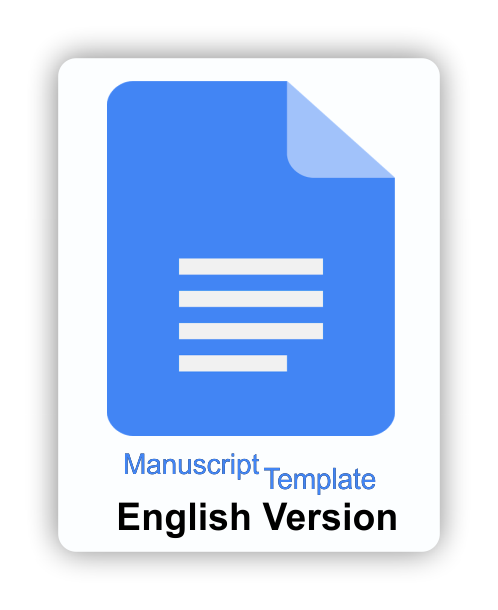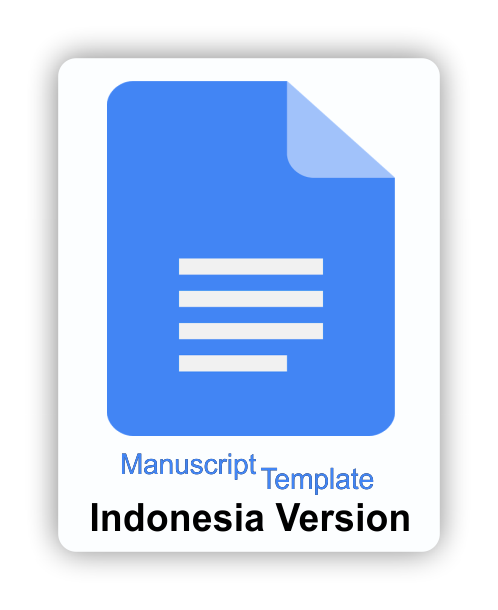Penggunaan e-learning dengan Technology Acceptance Model (TAM)
I Made Narsa, (Scopus ID: 57210152258) Faculty of Economy and Business, Universitas Airlangga, Indonesia
Abstract
Kemajuan dalam teknologi informasi memberi kesempatan pada institusi pendidikan untuk mengadopsi teknologi untuk meningkatkan efisiensi pembelajaran. e-Learning merupakan salah satu pengembangan tersebut dan tidak dapat disampaikan tanpa menggunakan teknologi. Tujuan penelitian ini yaitu untuk mendapatkan bukti empiris terkait actual usage dari penggunaan e-learning dengan pemediasi intention to use. Data dalam penelitian ini sebanyak 135 kuesioner yang disebarkan kepada mahasiswa Universitas Airlangga yang sempat memanfaatkan AULA. AULA merupakan portal e-Learning di Universitas Airlangga, yang merupakan singkatan dari Airlangga Univeristy e-Learning Application. Alat uji yang digunakan adalah Warp PLS. Perceived usefulness yang dirasakan pada penggunaan e-learning tidak memberikan pengaruh pada actual usage. Perceived ease of use memiliki hubungan signifikan pada intention to use. Hasil pengujian pengaruh tidak langsung menunjukkan perceived usefulness mempengaruhi niat perilaku untuk menggunakan teknologi. Persepsi kemudahan menggunakan teknologi dimotivasi tingkat kepercayaan individu terhadap kemampuan menggunakan teknologi, yang mana akan mendorong persepsi kebermanfaatan dan berimplikasi pada niat untuk menggunakan teknologi untuk menggunakan e-learning.
Kata kunci: Actual Usage, perceived ease of use, e-Learning, intention to use
Actual usage use of e-learning with Technology Acceptance Model (TAM)
Abstract
Progress in information technology provides opportunities for education to encourage technology to improve learning efficiency. E-Learning is one such development and cannot be delivered without using technology. The purpose of the study is to get empirical evidence related to actual usage of using e-learning with intention to use as a mediation. Data used in the study were 135 questionnaires that distributed to students of Airlangga University who are active or have used / participated in AULA (Airlangga University e-Learning Application). AULA is an e-Learning portal at Airlangga University. Data analysis techniques using Warp PLS. The results show the perceived usefulness of e-learning, does not affect the actual use. Perceived ease of use has a significant positive relationship with intention to use. The results evaluation direct effect of perceived usefulness influences intention to use technology. Perceived ease of use of technology is motivated by the level of individual trust in ability to use technology, which will encourage perceptions of usefulness and have implications for the intention to use technology to use e-learning.
Keywords: Actual Usage, perceived ease of use, e-learning, intention to useKeywords
Full Text:
PDFReferences
Al-Azawei, A., Patrick, P., & Lundqvist, K. (2017). Investigating the effect of learning styles in a blended e-learning system: an extension of the Technology Acceptance Model (TAM). Australasian Journal of Educational Technology, 33(2), 1-23. doi:https//doi.org/10.14742/ajet.2758
Alomary, A., & Woollard, J. (2015, 21st November 2015). How is Technology Accepted by Users? A Review of Technology Acceptance Models and Theories. The IRES - 17th International Conference, London, United Kingdom.
Baleghi -Zadeh, S., Ayub, A. F. M., Mahmud, R., & Daud, S. M. (2017). The Influence of System Interactivity and Technical Support on Learning Management System Utilization. Knowledge Management & E-learning: An International Journal, 9(1), 50-68. doi:https://doi.org/10.34105/j.kmel.2017.09.004
Barhoumi, C. (2016). User acceptance of the e-Information service as information resource: a new extension of the technology acceptance model. New Library World, 117(9/10), 626-643. doi:https//doi.org/10.1108/NLW-06-2016-0045
Baziad, M. (2015). Digital economy Indonesia aims to beat Malaysia in internet. Retrieved from https://www.digitalnewsasia.com/digital-economy/indonesia-aims-to-beat-malaysiaininternet.
Cakır, R., & Solak, E. (2015). Attitude of Turkish EFL learners towards e-learning through TAM model. Procedia - Social and Behavioral Sciences, 176, 596-601. doi:https://doi.org/10.1016/j.sbspro.2015.01.515
Chang, I.-C., Li, Y.-C., Hung, W.-F., & Hwang, H.-G. (2005). An empirical study on the impact of quality antecedents on tax payers' acceptance of internet tax-filing systems. Government Information Quarterly, 22(3), 389-410. doi:https://doi.org/10.1016/j.giq.2005.05.002
Davis, F. D. (1985). A technology acceptance model for empirically testing new end-user information systems: theory and results. (Ph.D in Management Disertation), Massachusetts Institute of Technology, Sloan School of Management.
Davis, F. D. (1989). Perceived usefulness, perceived ease of use, and user acceptance of information Technology. MIS Quarterly, 13(3), 319-340. doi:https//doi.org/10.2307/249008
Ducey, A. J., dan Coovert, M. D. (2016). Predicting Tablet Computer Use: An Extended Technology Acceptance Model for Physicians. Health Policy and Technology, 5(3), 268-284. doi: https://doi.org/10.1016/j.hlpt.2016.03.010
Fadare, O. (2015). A survey on perceived risk and intention of adopting internet banking. The Journal of Internet Banking and Commerce, 21(1), 1-21.
Folden, R. W. (2012). General perspective in learning management systems. Higher education institutions and learning management systems: Adoption and Standardization (pp. 1-27): IGI Global. doi:https//doi.org/10.4018/978-1-60960-884-2.ch001
Handayani, W. P. P., & Harsono, M. (2016). Aplikasi Technology Acceptance Model (TAM) pada komputerisasi kegiatan pertanahan. Jurnal Economia, 12(1), 13-22. doi:https://doi.org/10.21831/economia.v12i1.8415
Harris, I. (2017). Analisis Technology Acceptance Model (TAM) terhadap tingkat penelrimaan e-learning pada kalangan mahasiswa (Studi empiris pada Universitas Internasional Batam dan UPBJJ-UT Batam). Jurnal Terapan Manajemen dan Bisnis, 3(1), 1-20.
Hussein, Z. (2017). Leading to intention: the role of attitude in relation to Technology Acceptance Model in e-learning. Procedia Computer Science, 105, 159-164. doi:https://doi.org/10.1016/j.procs.2017.01.196
Jogiyanto, H. M. (2008). Metodologi penelitian sistem informasi. Yogyakarta: Penerbit Andi.
Khan, A., & Woosley, J. M. (2019). Comparison of contemporary Technology Acceptance Models and evaluation of the best fit for health industry organizations. International Journal of Computer Science & Engineering Technology, 1(1), 709-717.
Kusmana, A. (2017). E-learning dalam pembelajaran. Lentera Pendidikan: Jurnal Ilmu Tarbiyah dan Keguruan, 14(1), 35-51. doi:https://doi.org/10.24252/lp.2011v14n1a3
Nursiah, N. (2018). Pengaruh perceived ease of use dan perceived usefulness terhadap behavior intention to use. Jurnal Elektronik Sistem Informasi dan Komputer, 3(2), 39-47.
Priyadi, I. P., Nugraha, H. C., Ratih, C. K., Nugroho, H. A., Karyana, K., Reinaldo, R. N., … Subiyantoro, E. (2013). Simulasi Digital Jilid 1. Jakarta: Kementrian Pendidikan & Kebudayaan.
Rahmawati, R. N., & Narsa, I. M. (2019). Intention to use e-learning: aplikasi Technology Acceptance Model (TAM). Owner, 3(2), 260-269. doi:https://doi.org/10.33395/owner.v3i2.151
Sánchez-Prieto, J. C., Olmos-Migueláñez, S., & García-Peñalvo, F. J. (2017). MLearning and pre-service teachers: an assessment of the behavioral intention using an expanded TAM model. Computers in Human Behavior, 72, 644-654. doi:https://doi.org/10.1016/j.chb.2016.09.061
Setiawan, W., Hana, M. N., & Waslaludin, W. (2014). Analisis penerapan sistem e-learning FPMIPA UPI menggunakan Technology Acceptance Model (TAM). Jurnal Pengajaran MIPA, 19(1), 128-140. doi:http://dx.doi.org/10.18269/jpmipa.v19i1.433
Silva, J. R., Silva, A. F. d., & Chan, B. L. (2019). Enterprise risk management and firm value: evidence from Brazil. emerging markets finance and trade, 55(3), 687-703. doi:https://doi.org/10.1080/1540496X.2018.1460723
Smet, C. D., Bourgonjon, J., Wever, B. D., Schellens, T., & Valcke, M. (2012). Researching instructional use and the technology acceptation of learning management systems by secondary school teachers. Computers & Education, 58(2), 688-696. doi:https://doi.org/10.1016/j.compedu.2011.09.013
Wang, Q. (2009). Design and evaluation of a collaborative learning environment. Computers & Education, 53(4), 1138-1146. doi:https://doi.org/10.1016/j.compedu.2009.05.023
DOI: https://doi.org/10.21831/jitp.v6i2.26232
Refbacks
- There are currently no refbacks.
Copyright (c) 2019 Riski Nurida Rahmawati, I Made Narsa

This work is licensed under a Creative Commons Attribution-ShareAlike 4.0 International License.
Our journal indexed by:
View Journal Statistics



















.png)